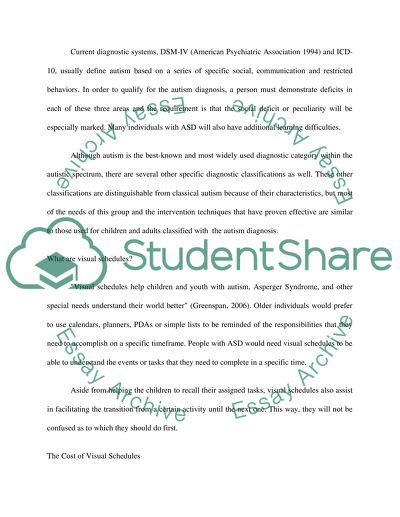Cite this document
(“Use of visual schedules in autism treatment Essay”, n.d.)
Use of visual schedules in autism treatment Essay. Retrieved from https://studentshare.org/health-sciences-medicine/1534437-use-of-visual-schedules-in-autism-treatment
Use of visual schedules in autism treatment Essay. Retrieved from https://studentshare.org/health-sciences-medicine/1534437-use-of-visual-schedules-in-autism-treatment
(Use of Visual Schedules in Autism Treatment Essay)
Use of Visual Schedules in Autism Treatment Essay. https://studentshare.org/health-sciences-medicine/1534437-use-of-visual-schedules-in-autism-treatment.
Use of Visual Schedules in Autism Treatment Essay. https://studentshare.org/health-sciences-medicine/1534437-use-of-visual-schedules-in-autism-treatment.
“Use of Visual Schedules in Autism Treatment Essay”, n.d. https://studentshare.org/health-sciences-medicine/1534437-use-of-visual-schedules-in-autism-treatment.


